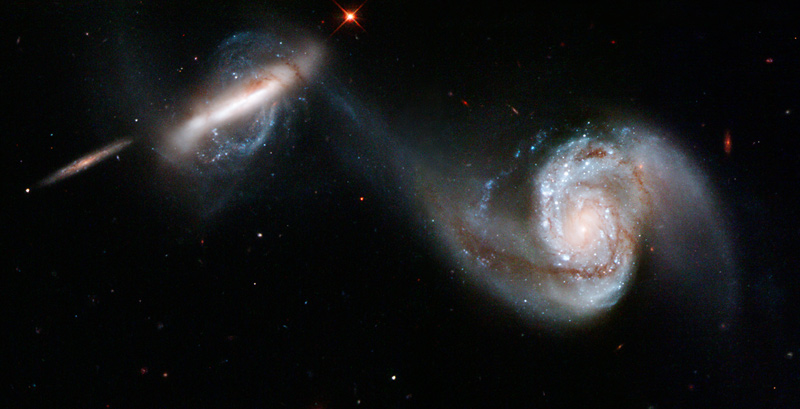Far-Side of The Moon
By Evan FinnesThe Apollo missions of the 1970’s can be credited with many great discoveries–the most notable of which, were the six missions that sent twelve astronauts to the moon. During these manned missions to the Moon, rock samples were collected and returned to the Earth. The analysis of these samples led to the current hypothesis of lunar formation. This hypothesis suggests that the Moon was formed by a catastrophic collision between Earth and Mars-sized planetesimal. After this collision, the Moon would have been covered by a thick blanket of magma, which cooled to form a crust much different from the Earth’s crust. Then 3.8 billion years ago, during the late heavy bombardment, the Moon’s surface was pounded by meteor impacts, leaving the surface deformed and heavily cratered. New data gathered by the Japanese mission, SELENA, may offer new insights into the formation of the moon.
SELENA focused on the differences between the near and far side of the moon, such as: compositional, gravitational, topographical, and tectonic differences. However, it is difficult for spacecrafts to relay information from the far side of the Moon, due to the fact that the Moon is tidally locked to the Earth. SELENA was able to surmount this obstacle by using a companion satellite positioned in an elliptical orbit at a higher altitude. This companion satellite was then able to relay information between Earth and SELENA.
Because the Moon is a homogeneous body, there are several differences between the near (Earth facing) and far-side of the Moon. The nearside of the Moon is covered by dark basaltic plains, (the very features that Galileo once mistook for seas). The far side of the Moon is much more heavily cratered, and the higher elevations are composed of a bright material. These compositional differences are accompanied by differences which are intrinsic properties of the materials that make up each side of the Moon, such as crustal thickness and density. Other differences between lunar faces include volcanic activity and surface age.
Another key difference between the lunar faces is the gravitational anomalies found on either side of the Moon. These differences in gravitational anomalies can be used to deduce possible density differences of the interior. Positive gravitational anomalies on the nearside of the Moon have been known about for several years and are associated with the large areas of basaltic planes. These planes are referred to as mascons (mass concentrations). These mascons could be the result of basaltic magma filling basins after basin formation, or they could be the result of mantle uplift that could have occurred during a large impact event. SELENA was able to map the gravitational anomalies of the lunar far-side for the first time. What SELENA discovered was that the far-side mascons have small central positive gravitational anomalies that are surrounded by a wide ring of negative anomalies. These differences in gravitational anomalies observed on either side of the Moon could suggest that the far-side of the Moon may have had much cooler and rigid conditions in its early history.
SELENA also used a Lunar Radar Sounder to map subsurface stratigraphy beneath the nearside basaltic basins. The results of this experiment show that the thickness of the most recent volcanic flows may have been deformed compressive stresses that occurred during a period of global cooling, and not entirely because of the stresses which occurred during mascon formation.
The terrain camera onboard SELENA was able to photograph volcanic flows on the lunar far-side. These photos were then used to estimate the age of the far-side basalts using cratering statistics. Based on the cratering statistics, the age of the lunar far side was found to be much younger than the lunar nearside, with volcanic activity continuing to make fresh surface until approximately 2.5 billion years ago.
Although the data gathered so far is not enough to paint a clear picture of lunar evolution, it has become clear that the mascons formed much differently on either side of the Moon during late heavy bombardment. To help interpret these discoveries, new data will be on its way as China, India, and the United States all have orbiters slated for lunar observation in the next couple of years. In the meantime we are left to wonder, are these differences due to external processes such as a giant impact, or are they due to internal processes such as core formation, and crustal differentiation? One thing seems clear, the difference in surface age on either side of the Moon will be an important variable when devising a model for lunar evolution.

